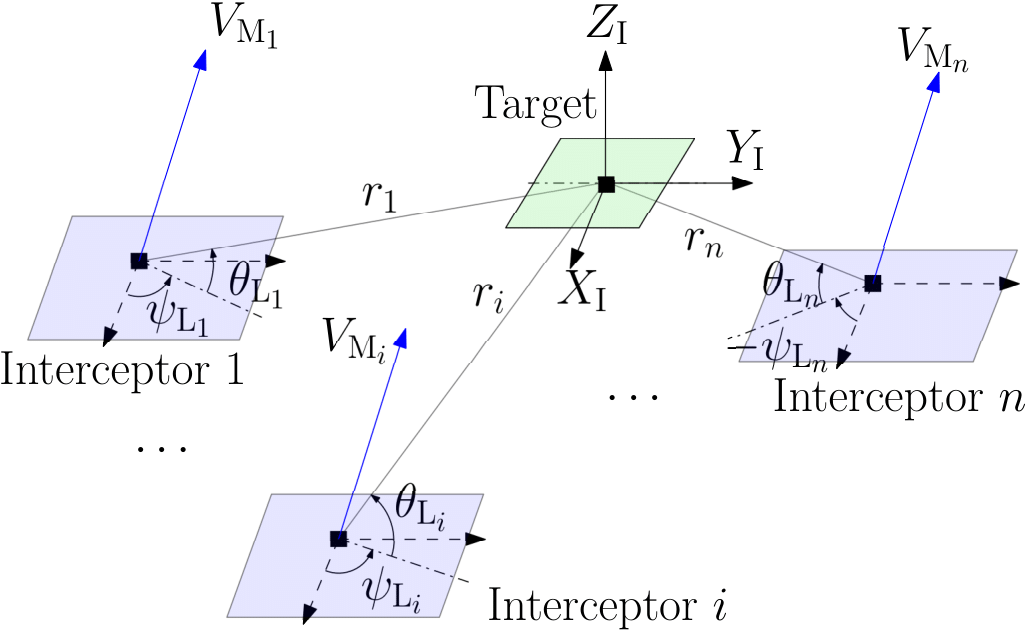Target Interception
Guidance refers to the determination of a strategy through which an object is made to follow a nominal trajectory in the presence of off-nominal conditions. These off-nominal conditions, in the context of aerospace engineering, may arise due to a number of factors such as wind gust, turbulence, navigational anomalies, change in weather conditions during flight, etc. More intuitively, when we discuss guidance, we generally consider an object (pursuer/interceptor) and a goal (target/evader). It is required that the object attains a trajectory in such a way that it comes closer to the goal as time progresses. In doing so, the object acquires information from its environment and take some decisions. The target, however, may not always be stationary, rather it is mobile in general. While a single pursuer may intercept the target using carefully designed guidance strategies, several pursuers may coordinate among themselves to their advantage. Such a cooperative behavior is common in natural entities to gain competitive advantages in claiming territory, hunting for food, avoiding predators, survival and evolution.


We explore the possibility of capturing a target using multiple autonomous vehicles in two and three-dimensions. It is required that vehicles arrive at the target simultaneously. The time of target capture may either be specified in advance to only one vehicle, or the vehicles arrive at the target by deciding the time of capture implicitly during homing. In either case, control over engagement duration is necessary.



